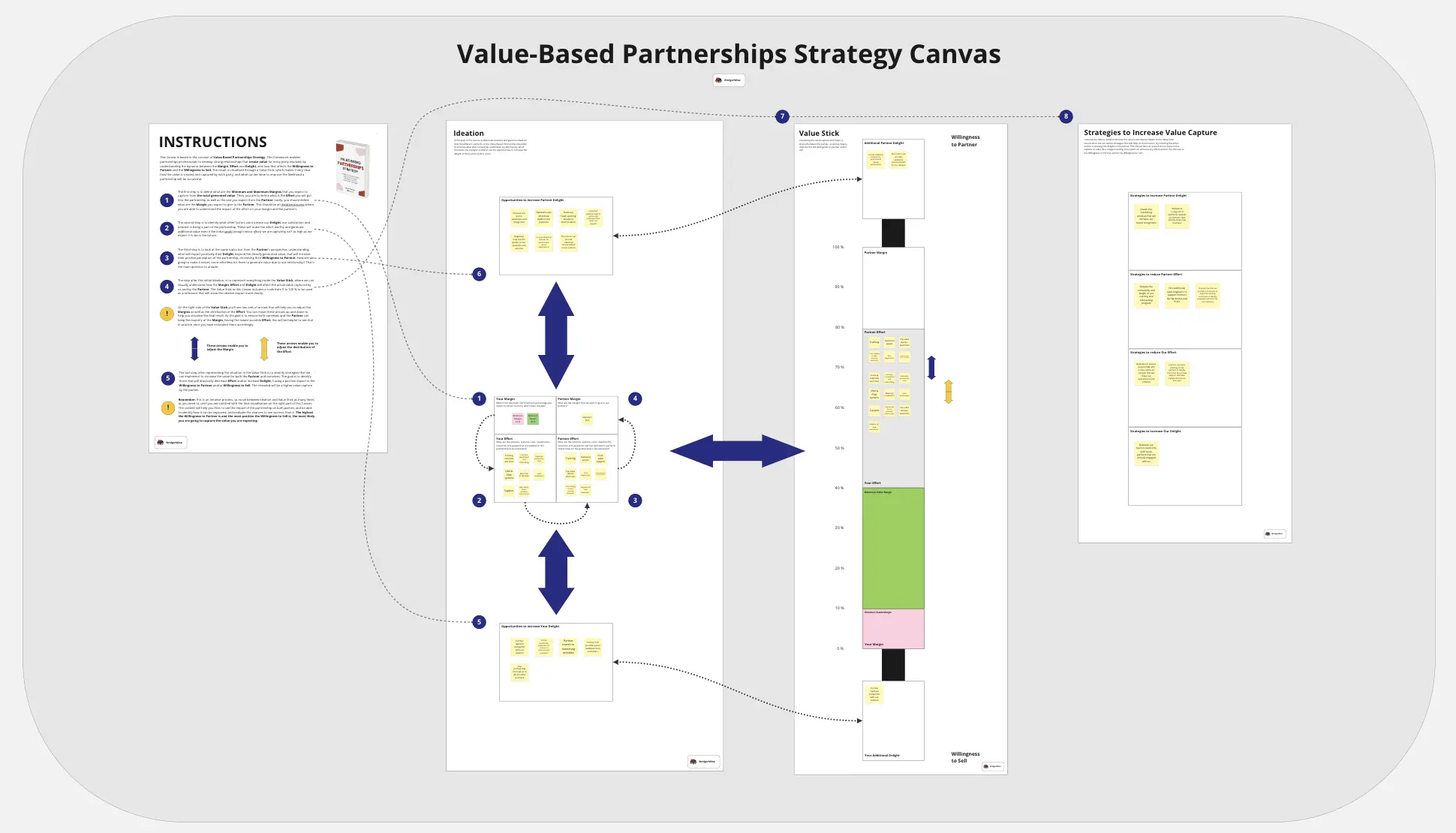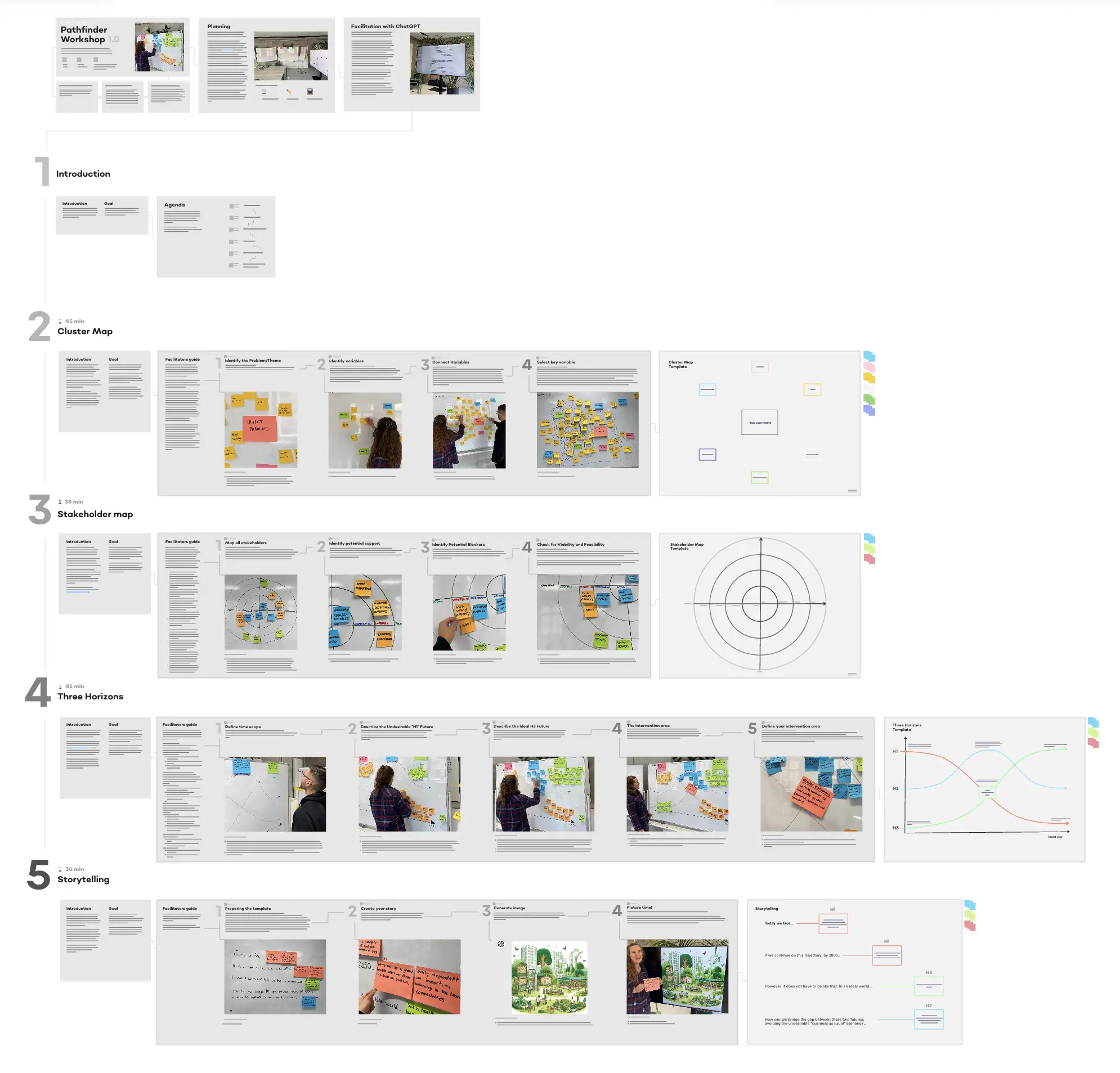The Policy Blueprinting board is designed as a framework to facilitate the creation and refinement of policy or complex system blueprints. It serves as a structured canvas to initially guide small teams, before engaging diverse stakeholder groups in the intricate process of policy development, ensuring that all relevant actors and their interactions within the system are thoroughly considered. This summary outlines the key components and steps involved in using the board effectively.
System Goal or Policy Intent
The initial step in the policy blueprinting process is to clearly define the system goal or policy intent. This involves articulating what success would look like without attributing blame to specific actors. For instance, rather than stating, "Fast food retailers contribute to a healthy food environment," a more neutral and constructive goal would be, "A food environment that enables people to maintain a healthy weight." This approach helps in setting a positive and inclusive tone for the policy development process.
Identifying Affected Actors and Their Goals
As a small team - the next step is to identify all the actors affected by the policy and understand their goals, needs, behaviours, and contexts. These actors can be grouped based on similar outcomes or goals, such as "food retailers," or they can be individual organisations or people, like "the FSA." The board allows for the addition of multiple actors as needed, ensuring a comprehensive mapping of the system.
Mapping Stages of the System
As a small team - the policy is mapped from their perspectives across different stages of the system. These stages can be considered sub-goals or outcomes and may evolve as the actors are considered.
Facilitating Group Discussions
A critical aspect of the blueprinting process is facilitating discussions with a diverse group of stakeholders, those involved in or impacted by the policy. The board guides the group to work through the policy/system map from left to right, considering various questions and insights. Some areas of the policy may be well-developed and quickly navigated, while novel or emerging areas may require more in-depth discussion and generate significant insights.
Annotating Potential Changes
The board acts as a tool to prompt an assembled group to annotate any potential changes to the policy or future state directly onto the map. This collaborative approach ensures that all insights and suggestions are captured and can be revisited during the policy refinement process.
Behind-the-Scenes Considerations
The board prompts users to consider what is happening behind the scenes to make the policy successful. This includes identifying necessary targets or incentives, potential regulatory changes, required resources, and the organisations responsible for providing these resources. It also encourages users to reflect on uncertainties and assumptions, opportunities for intervention, and ways to improve outcomes.
Identifying Risks and Mitigating Unintended Consequences
An essential part of the process is identifying key risks and potential unintended consequences of the policy. The board provides space to discuss how these risks can be mitigated and how unintended consequences can be avoided. This proactive approach helps in creating a more resilient and effective policy.
Considering Leverage Points
Leverage points are areas within the policy or system where a small change can result in a significant positive impact. The board encourages users to highlight these points and consider how they can be utilised to enhance the policy. This involves changing parameters, interactions, structures, and beliefs within the system to achieve the desired outcomes.
Addressing Biases and Competing Behaviours
The board also overlays considerations of how user group behaviours interact with the desired policy outcome and whether any biases need addressing. It prompts users to identify potential tensions between policy outcomes and individual behaviours, as well as cognitive biases that may influence the policy. Addressing these biases is crucial for creating a fair and effective policy.

Andy Marsden
Design Lead @ Nesta
Design lead at Nesta - applying design methods to help decarbonise homes in the UK.
Categories
Similar templates
Pathfinder Workshop
Timeline Retrospective

Timeline Retrospective
Reflecting on your project's timeline can provide valuable insights. The Timeline Retrospective template helps you review and analyze the key milestones and events of your project. Identify what went well, what could be improved, and how to optimize future projects. This template encourages team collaboration and open discussion, fostering continuous improvement and better project management skills.
Pathfinder Workshop
Timeline Retrospective

Timeline Retrospective
Reflecting on your project's timeline can provide valuable insights. The Timeline Retrospective template helps you review and analyze the key milestones and events of your project. Identify what went well, what could be improved, and how to optimize future projects. This template encourages team collaboration and open discussion, fostering continuous improvement and better project management skills.

